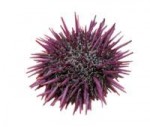Researchers find potential in sea creature

Studying the genetics of sea worms and sea urchins might seem like a strange way to understand the human immune system, but in the lab of USF scientist Gary Litman, the study of these animals yields insight into the evolution and mechanisms of human immunology. It may also aid in the production of more effective drug treatments for cancer and autoimmune diseases such as rheumatoid arthritis.
A team of USF scientists headed by Litman, a USF distinguished professor of pediatrics, studies the DNA and immune-system proteins of these animals at its lab in the All Children’s Hospital Research Institute in St. Petersburg. The close evolutionary relationship of sea worms and sea urchins to humans makes them ideal candidates for examining the development of the human immune system and how it functions.
“These animals are outstanding models for examining fundamental developmental biology, and they offer many advantages for discerning relationships with the human immune system, other cellular processes and how genetic regulatory circuits are organized,” Litman said.
Tampa Bay Sea Worms
Litman’s team has closely studied the tiny spineless sea worm called amphioxus that populates the waters of Tampa Bay for years. Also called a lancelet, nearly 1.7 trillion of these little animals live in the Bay, constituting nearly 60 percent of the waters’ biomass.
Of particular interest to Litman and fellow researchers John Cannon and Robert Haire is a protein found in these animals and its striking structural similarity to an immune system protein found in humans. Amphioxus’s protein, however, is considerably tougher and remarkably adept at combating the bacterial, viral and chemical threats posed by the harsh environment of the bay waters.
“In Tampa Bay, there are loads of bacteria and viruses, so amphioxus is open to attack from a host of foreign organisms.” Litman said. “We wanted to better understand why these animals do so well, and this protein is key.”
Amphioxus is a classified as a protochordate, an evolutionary ancestor of humans that diverged in development prior to vertebrates. This developmental tie makes them excellent candidates to share characteristics of the human immune system, Litman said.
“But even so, we were startled by the similarity between the amphioxus protein and the human immune system protein,” Litman said.
Litman and his team suspected that the amphioxus’s protein was somehow used in the animal’s immune system, but weren’t sure until David Ostrov, an assistant professor at the University of Florida’s College of Medicine, crystallized the protein and analyzed the diffraction patterns of X-rays shot at the crystal, a technique known as X-ray crystallography.
The results showed a striking structural similarity to a protein found on the surface of human T-cells, immune system cells that attack cells infected by bacterium, viruses or other pathogens.
“If you asked the question, ‘What is the most similar known structure in the world to this primitive protein?’ the answer is a human protein expressed on the surface of T-cells,” Ostrov said.
Though nearly identical in structure, this protein functions differently from the one found in human T-cells, using an entirely different region on its surface to target and attack cells infected by foreign invaders. The difference in the mechanism of the protein’s response to these microorganisms fascinates Litman, because understanding how this protein functions and what makes it so resilient could hold the key to altering the proteins used in drug therapy, making them more effective and better able to kill diseased cells.
Litman also sees the level of genetic variation in amphioxus, which allows it to survive in a world full of incredibly diverse and lethal microorganisms, as a means to understand cancer, which involves genetic mutation.
“It just continues to fascinate us,” Litman said. “Literally every day, there’s just one more unexpected thing.”
Sea Urchins
The spiky balls of multi-colored spines that reside in waters around the world are another area of Litman’s research.
Recently, a major international effort headed by Eric Davidson, a professor of cell biology at the California Institute of Technology, sequenced the genome of the male California purple sea urchin. Ever since, Litman and his team have been looking at genes encoding the immune system and discovering how they work.
As with the study of amphioxus, the study of the immune systems of animals with a direct evolutionary tie to humans will aid in the understanding of the human immune system, allowing the production of better drugs and better immune-based therapies, Litman said.
“We’ve found some interesting things in the genome,” Litman said, “and we’re working on discovering the functions of clearly what are some very interesting molecules – especially how they connect to other things that we already know.”
Sea urchins evolved from the same ancestors as humans more than 540 million years ago, and both humans and sea urchins are classified in the deuterostome superphyla, making them more closely related than all other animals outside this phyla, such as fruit flies and worms.
“The sea urchins are a kind of distant mirror from which we can examine the vertebrate genome,” Davidson said in an interview with the journal Science.
The sequencing of the genome and its analysis showed that sea urchins share groups of genes similar to those in humans, but they are connected in different ways and perform different functions, Litman said.
“This goes right to the basis of how the immune system works and how things fit together,” Litman said. “It’s as if someone went behind a VCR and unplugged the cables and plugged them all back in a different way.”






